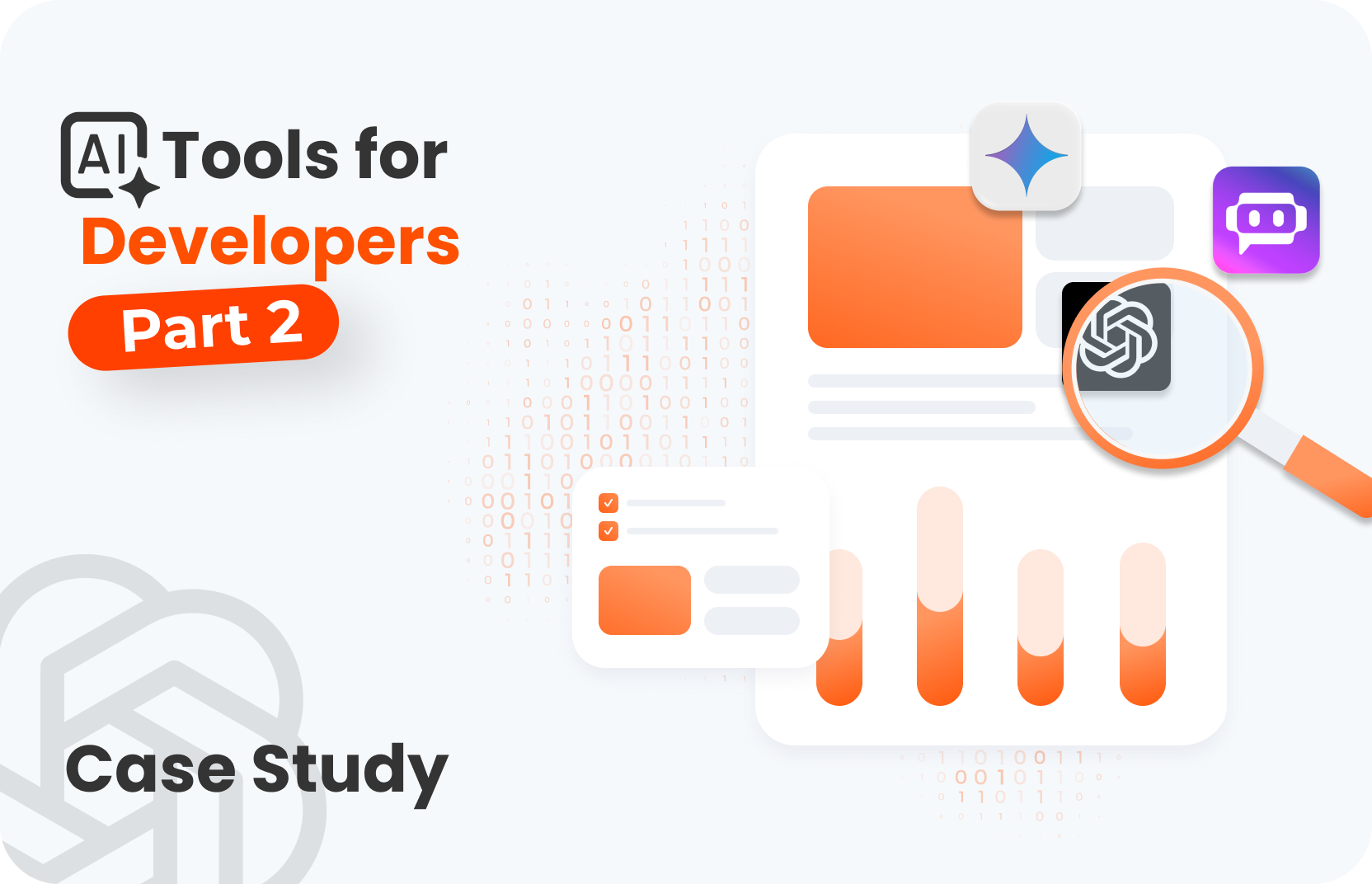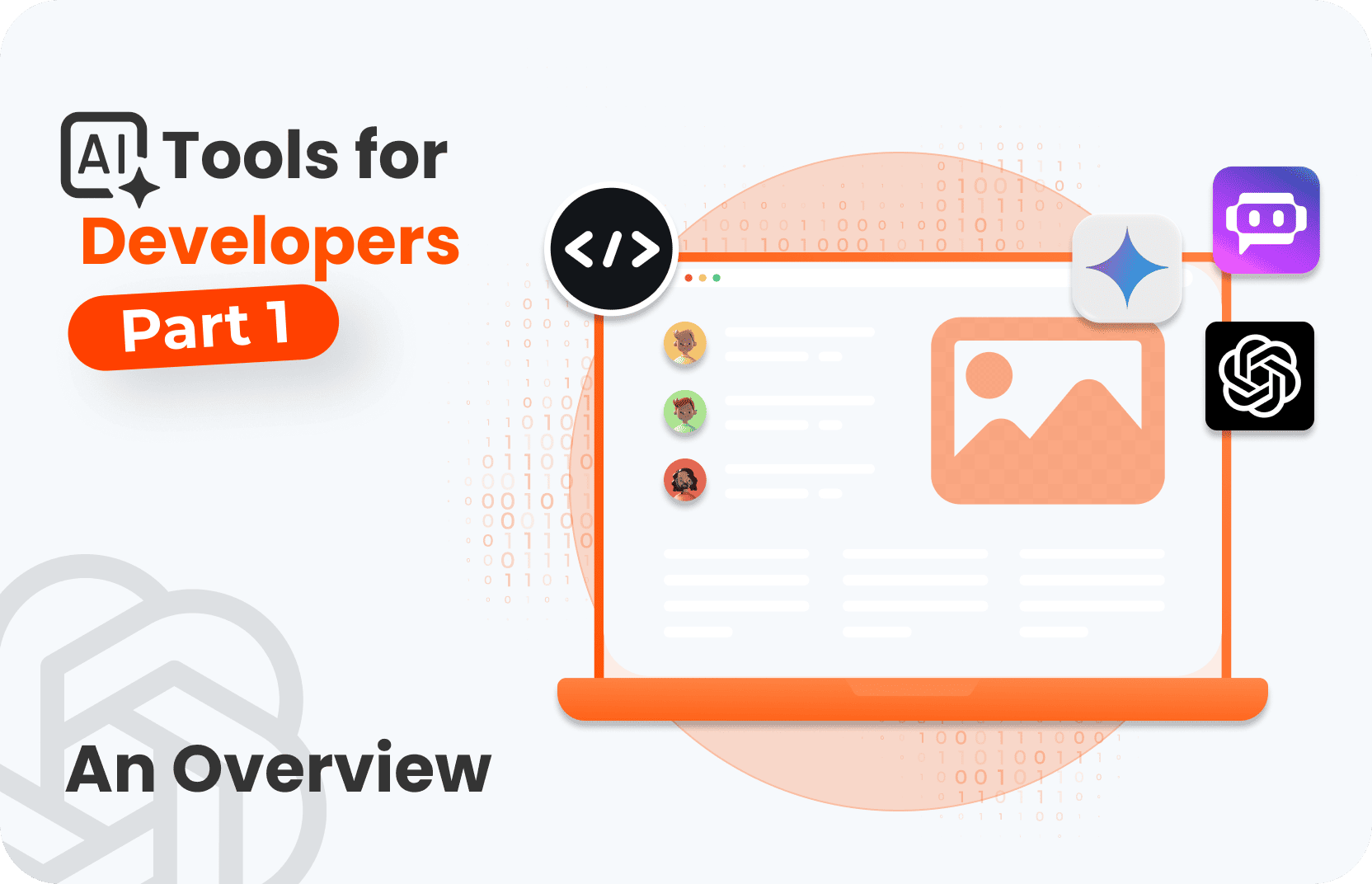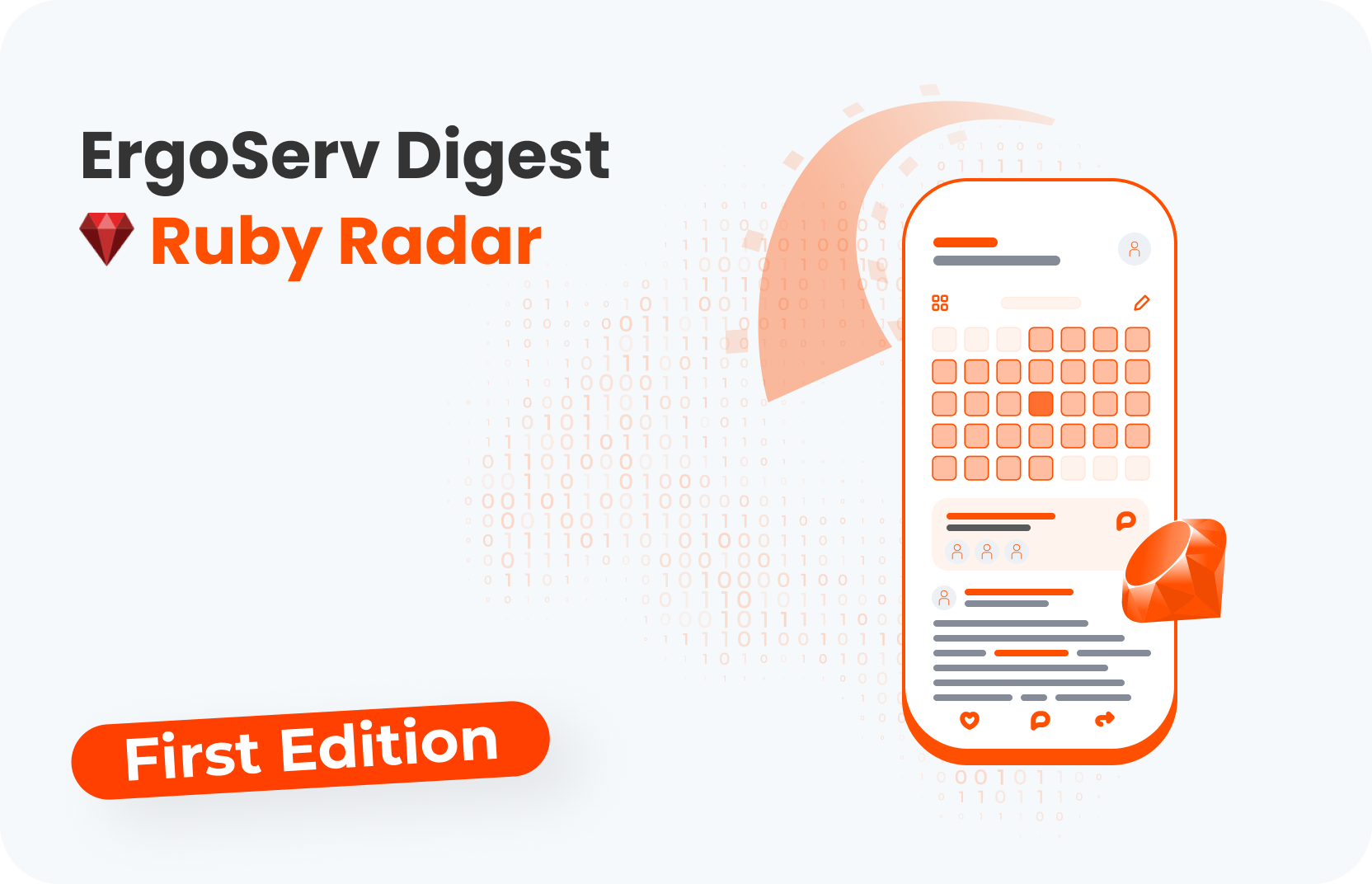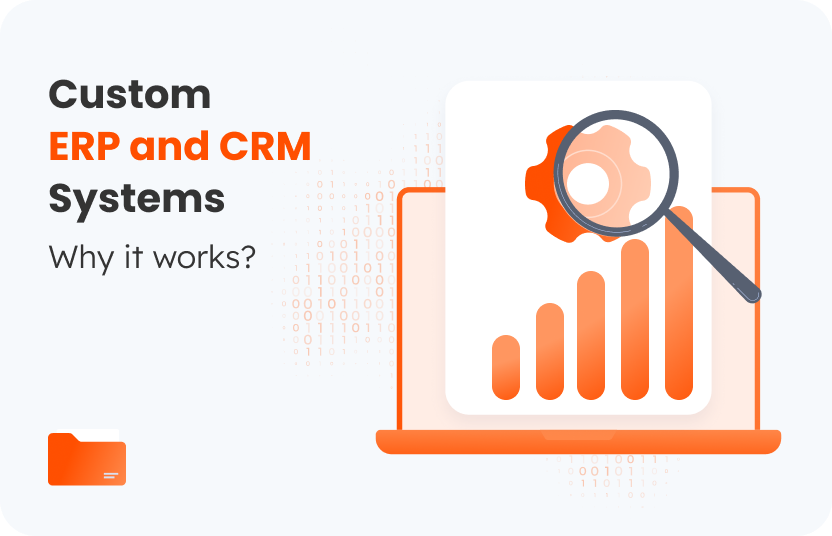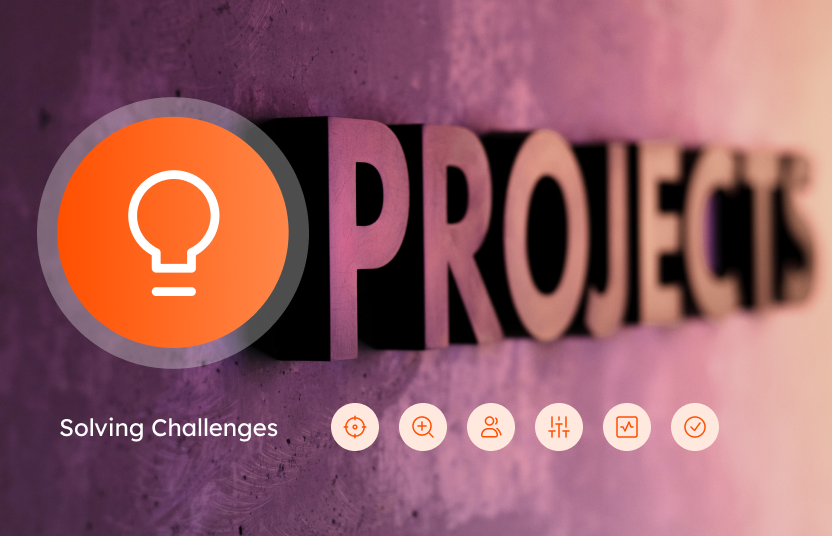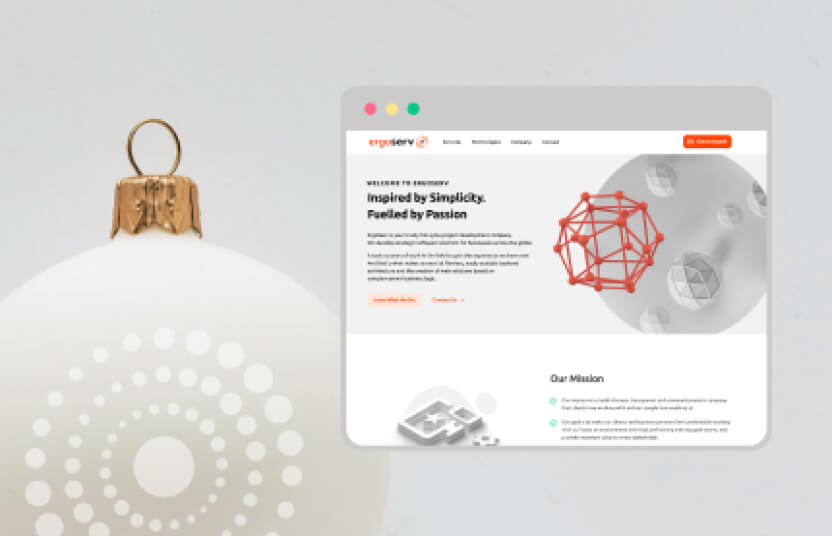Top 10 Ruby Gems We Love and Use in Nearly Every Ruby on Rails Application in 2024
Introduction
In the ever-evolving world of web development, staying up-to-date with the best tools and libraries is crucial for maintaining efficiency and productivity. Now, in 2024, after more than 10 years of developing various complex projects, we can confidently say that certain Ruby gems have proven indispensable. These gems consistently enhance our Ruby on Rails applications with their robust features, ease of use, and community support.

In this article, we’ll share our top 10 favorite Ruby gems that have become staples in our development toolkit. Whether you’re a seasoned Rails developer or just starting out, these gems will help you streamline your workflow, improve your code quality, and build more powerful applications. Join us as we explore the gems that we love and use in nearly every Rails project, making our development process smoother and more enjoyable.
Gems
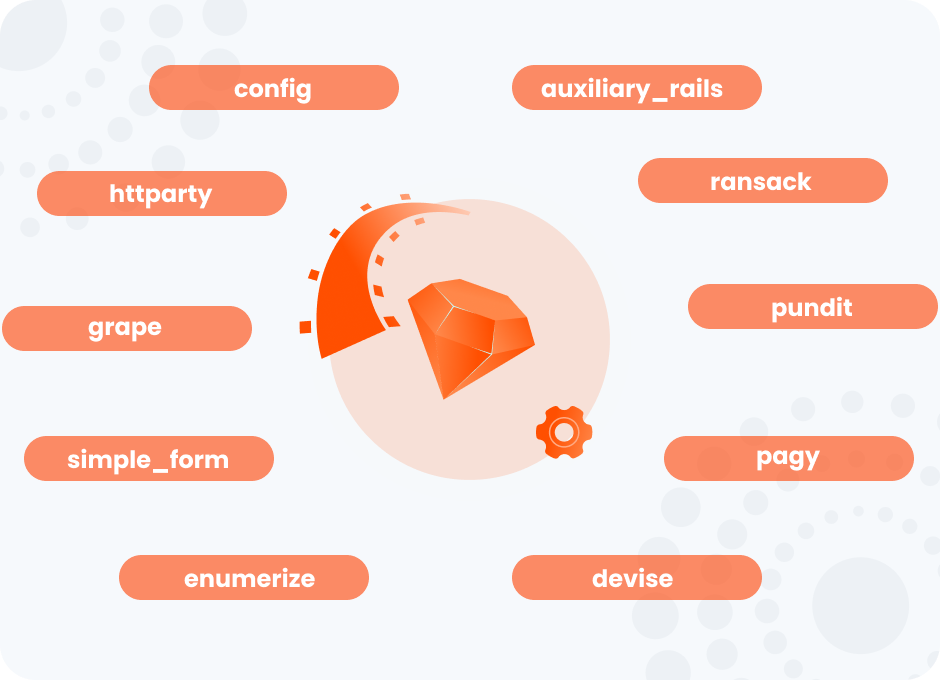
-
config and dotenv
Kicking off our list are the config and dotenv gems, essential tools for managing application configuration in Ruby.
-
Config provides a structured, hierarchical configuration system that supports YAML files and environment-specific settings, making it ideal for complex applications needing organized and maintainable configuration management. It allows for easy handling of nested configurations and merging of environment-specific settings.
-
Dotenv focuses on loading environment variables from a .env file into the application’s environment, simplifying the management of environment-specific variables without hardcoding them into the application. It is particularly useful for 12-factor apps that rely on environment variables for configuration.
We’ve used Figaro previously, but an app’s configs are not always only ENV vars. There are many cases when you want to have application settings but don’t need to set them via ENV.
Config offers more structure and organization for complex settings, while Dotenv provides simplicity and ease of use for managing environment variables. Config is chosen for its robustness in handling complex configurations, and Dotenv is favored for its straightforward approach to managing environment variables in development and production environments. Besides that, we use Rails credentials.yml and config_for features, yet Config is an entry point for all the app’s configs.
╰┈➤ An example of how we manage configs in our Rails applications can be found in our Handbook -
Configuration.
-
httparty or faraday
Next up, the httparty and
faraday gems are popular choices for making HTTP requests in Ruby. HTTParty is known for its simplicity and ease of use, providing a straightforward API for making HTTP requests and parsing responses. It's a great choice for quick integrations and simple use cases.
Faraday, on the other hand, offers a more flexible and modular approach, supporting middleware for request and response processing, which makes it ideal for more complex and customizable HTTP interactions. Compared to other libraries like Net::HTTP or RestClient, HTTParty, and Faraday provide higher-level abstractions and more features, with Faraday standing out for its extensibility and middleware capabilities. HTTParty is typically chosen for its simplicity, and it is our choice by default, while Faraday is preferred for more complex scenarios requiring customization and middleware support.
╰┈➤ Examples of how we build API clients can be found in our Handbook -
Building a simple HTTP Client.
-
grape and grape-entity
Moving along, the grape and grape-entity gems together provide a powerful and efficient way to build RESTful APIs in Ruby. Grape offers a simple DSL for defining API endpoints, parameter validation, and response formatting, making it ideal for API-centric applications. Grape-Entity complements Grape by providing a framework for serializing and presenting API responses, ensuring a clean separation between data and presentation logic.
Compared to alternatives like Rails API and ActiveModel::Serializers, Grape and Grape-Entity offer a more lightweight and modular approach specifically designed for API development. This combination is preferred for its focused feature set, explicit control over API behavior, and better performance in API-centric applications. Rails API is more integrated for those already using Rails, and ActiveModel::Serializers is more tightly coupled with Active Record, making Grape and Grape-Entity a more flexible and efficient choice for standalone APIs.
╰┈➤ An example of how we build and structure our API applications can be found in our Handbook -
Building an API.
-
simple_form or formtastic
The next gems on our list, simple_form and
formtastic, offer streamlined, flexible solutions for building forms in Ruby on Rails applications. Simple Form is known for its ease of use and integration with popular CSS frameworks, allowing quick customization and clean markup. Formtastic, on the other hand, provides a highly semantic and customizable approach to form creation.
Compared to Rails' default form helpers, both Simple Form and Formtastic significantly reduce boilerplate code and enhance maintainability, making them preferable for complex form requirements. Simple Form is typically favored for its simplicity and ease of integration, while Formtastic is chosen for its detailed semantic capabilities.
-
enumerize
Next up, the enumerize gem is a valuable tool for handling enums in Ruby on Rails applications. It simplifies the definition of enumerated attributes, providing a clean, type-safe, and flexible API.
We started working with enumerize long before ActiveRecord::Enum was added to Rails, but we still stayed with enumerize because of its more convenient syntax, flexibility, and features.
-
devise
Our next favorite, the devise gem, is a popular and comprehensive authentication solution for Ruby on Rails. It offers a wide range of built-in features, such as sign-up, login, password recovery, and account management. It is highly customizable and has strong community support.
Compared to sorcery, which is more lightweight and modular, Devise provides more out-of-the-box functionality, making it a quicker choice for developers who need a robust, ready-to-use authentication system. Other authentication gems like Authlogic offer similar features but are less flexible and have smaller communities. Devise's extensive feature set and ease of integration make it a preferred choice for many developers.
-
pagy
The pagy gem, coming in next, is a standout choice for pagination in Ruby on Rails due to its speed, lightweight nature, and minimal memory usage. It offers extensive customization options while maintaining simplicity in implementation.
Compared to alternatives like Kaminari and will_paginate, Pagy is more efficient and performant, with a smaller footprint and fewer dependencies. This makes it ideal for high-performance applications that need scalable and flexible pagination solutions.
-
pundit
The third spot goes to the pundit gem, essential for Ruby on Rails applications because it provides a simple, robust, and flexible framework for handling authorization. It allows you to define concise and readable policy classes that manage user permissions, ensuring that your application enforces access control rules consistently and securely across your entire codebase.
-
ransack
Nearing the top, the ransack gem is highly valuable for Ruby on Rails applications because it provides an easy-to-implement, flexible, and customizable way to add search and filtering functionality. It integrates seamlessly with Active Record, supports complex queries across associations, and enhances user experience by allowing users to find efficiently and sort data.
-
auxiliary_rails and auxiliary_rails_resourceable
Finally, our number one gems, auxiliary_rails and auxiliary_rails_resourceable, developed inside ErgoServ, provide a set of tools and functionalities that can enhance the development process in Ruby on Rails applications. Here are the key reasons to consider using these gems:
auxiliary_rails
-
Modular Enhancements: This gem offers a suite of modular enhancements to extend the functionality of your Rails application without bloating it. It includes useful tools and helpers that can streamline development tasks.
-
Convenience Methods: The gem provides various convenience methods that can simplify common tasks in Rails, making your code cleaner and more maintainable.
-
Customizable: While providing out-of-the-box functionalities, it is also customizable, allowing you to tweak it to fit your specific needs.
-
Well-Documented: The gem comes with comprehensive documentation, making it easier to understand and integrate into your projects.
auxiliary_rails_resourceable
-
Resource Management: This gem focuses on enhancing resource management within Rails applications. It provides a set of tools to manage resources more efficiently, adhering to Rails' RESTful design principles.
-
Consistency: It ensures consistency in how resources are managed and accessed within your application, reducing the likelihood of errors and improving code readability.
-
Simplifies Controller Logic: Abstracting common patterns in resource management simplifies controller logic, making it more concise and easier to understand.
-
Integration with auxiliary_rails: This gem works well in conjunction with auxiliary_rails, providing a more comprehensive suite of tools to enhance your Rails development experience.
Benefits of Using Both Gems Together:
-
Enhanced Productivity: With both gems, you get a wide range of enhancements and tools to speed up development, reduce boilerplate code, and improve code quality.
-
Consistency and Clean Code: The gems promote consistent coding practices, which can lead to cleaner and more maintainable codebases.
-
Improved Resource Management: They streamline the management of resources in your Rails applications, adhering to best practices and making your codebase more robust.
-
Ease of Use: Both gems are designed to be easy to integrate and use, with good documentation and a focus on enhancing the developer experience.
╰┈➤ Find out more about these gems on their GitHub pages: auxiliary_rails and auxiliary_rails_resourceable.
Summary

config and dotenv
Kicking off our list are the config and dotenv gems, essential tools for managing application configuration in Ruby.
- Config provides a structured, hierarchical configuration system that supports YAML files and environment-specific settings, making it ideal for complex applications needing organized and maintainable configuration management. It allows for easy handling of nested configurations and merging of environment-specific settings.
- Dotenv focuses on loading environment variables from a .env file into the application’s environment, simplifying the management of environment-specific variables without hardcoding them into the application. It is particularly useful for 12-factor apps that rely on environment variables for configuration.
We’ve used Figaro previously, but an app’s configs are not always only ENV vars. There are many cases when you want to have application settings but don’t need to set them via ENV.
Config offers more structure and organization for complex settings, while Dotenv provides simplicity and ease of use for managing environment variables. Config is chosen for its robustness in handling complex configurations, and Dotenv is favored for its straightforward approach to managing environment variables in development and production environments. Besides that, we use Rails credentials.yml and config_for features, yet Config is an entry point for all the app’s configs.
╰┈➤ An example of how we manage configs in our Rails applications can be found in our Handbook - Configuration.
httparty or faraday
Next up, the httparty and faraday gems are popular choices for making HTTP requests in Ruby. HTTParty is known for its simplicity and ease of use, providing a straightforward API for making HTTP requests and parsing responses. It's a great choice for quick integrations and simple use cases.
Faraday, on the other hand, offers a more flexible and modular approach, supporting middleware for request and response processing, which makes it ideal for more complex and customizable HTTP interactions. Compared to other libraries like Net::HTTP or RestClient, HTTParty, and Faraday provide higher-level abstractions and more features, with Faraday standing out for its extensibility and middleware capabilities. HTTParty is typically chosen for its simplicity, and it is our choice by default, while Faraday is preferred for more complex scenarios requiring customization and middleware support.
╰┈➤ Examples of how we build API clients can be found in our Handbook - Building a simple HTTP Client.
grape and grape-entity
Moving along, the grape and grape-entity gems together provide a powerful and efficient way to build RESTful APIs in Ruby. Grape offers a simple DSL for defining API endpoints, parameter validation, and response formatting, making it ideal for API-centric applications. Grape-Entity complements Grape by providing a framework for serializing and presenting API responses, ensuring a clean separation between data and presentation logic.
Compared to alternatives like Rails API and ActiveModel::Serializers, Grape and Grape-Entity offer a more lightweight and modular approach specifically designed for API development. This combination is preferred for its focused feature set, explicit control over API behavior, and better performance in API-centric applications. Rails API is more integrated for those already using Rails, and ActiveModel::Serializers is more tightly coupled with Active Record, making Grape and Grape-Entity a more flexible and efficient choice for standalone APIs.
╰┈➤ An example of how we build and structure our API applications can be found in our Handbook - Building an API.
simple_form or formtastic
The next gems on our list, simple_form and formtastic, offer streamlined, flexible solutions for building forms in Ruby on Rails applications. Simple Form is known for its ease of use and integration with popular CSS frameworks, allowing quick customization and clean markup. Formtastic, on the other hand, provides a highly semantic and customizable approach to form creation.
Compared to Rails' default form helpers, both Simple Form and Formtastic significantly reduce boilerplate code and enhance maintainability, making them preferable for complex form requirements. Simple Form is typically favored for its simplicity and ease of integration, while Formtastic is chosen for its detailed semantic capabilities.
enumerize
Next up, the enumerize gem is a valuable tool for handling enums in Ruby on Rails applications. It simplifies the definition of enumerated attributes, providing a clean, type-safe, and flexible API.
We started working with enumerize long before ActiveRecord::Enum was added to Rails, but we still stayed with enumerize because of its more convenient syntax, flexibility, and features.
devise
Our next favorite, the devise gem, is a popular and comprehensive authentication solution for Ruby on Rails. It offers a wide range of built-in features, such as sign-up, login, password recovery, and account management. It is highly customizable and has strong community support.
Compared to sorcery, which is more lightweight and modular, Devise provides more out-of-the-box functionality, making it a quicker choice for developers who need a robust, ready-to-use authentication system. Other authentication gems like Authlogic offer similar features but are less flexible and have smaller communities. Devise's extensive feature set and ease of integration make it a preferred choice for many developers.
pagy
The pagy gem, coming in next, is a standout choice for pagination in Ruby on Rails due to its speed, lightweight nature, and minimal memory usage. It offers extensive customization options while maintaining simplicity in implementation.
Compared to alternatives like Kaminari and will_paginate, Pagy is more efficient and performant, with a smaller footprint and fewer dependencies. This makes it ideal for high-performance applications that need scalable and flexible pagination solutions.
pundit
The third spot goes to the pundit gem, essential for Ruby on Rails applications because it provides a simple, robust, and flexible framework for handling authorization. It allows you to define concise and readable policy classes that manage user permissions, ensuring that your application enforces access control rules consistently and securely across your entire codebase.
ransack
Nearing the top, the ransack gem is highly valuable for Ruby on Rails applications because it provides an easy-to-implement, flexible, and customizable way to add search and filtering functionality. It integrates seamlessly with Active Record, supports complex queries across associations, and enhances user experience by allowing users to find efficiently and sort data.
auxiliary_rails and auxiliary_rails_resourceable
Finally, our number one gems, auxiliary_rails and auxiliary_rails_resourceable, developed inside ErgoServ, provide a set of tools and functionalities that can enhance the development process in Ruby on Rails applications. Here are the key reasons to consider using these gems:
auxiliary_rails
- Modular Enhancements: This gem offers a suite of modular enhancements to extend the functionality of your Rails application without bloating it. It includes useful tools and helpers that can streamline development tasks.
- Convenience Methods: The gem provides various convenience methods that can simplify common tasks in Rails, making your code cleaner and more maintainable.
- Customizable: While providing out-of-the-box functionalities, it is also customizable, allowing you to tweak it to fit your specific needs.
- Well-Documented: The gem comes with comprehensive documentation, making it easier to understand and integrate into your projects.
auxiliary_rails_resourceable
- Resource Management: This gem focuses on enhancing resource management within Rails applications. It provides a set of tools to manage resources more efficiently, adhering to Rails' RESTful design principles.
- Consistency: It ensures consistency in how resources are managed and accessed within your application, reducing the likelihood of errors and improving code readability.
- Simplifies Controller Logic: Abstracting common patterns in resource management simplifies controller logic, making it more concise and easier to understand.
- Integration with auxiliary_rails: This gem works well in conjunction with auxiliary_rails, providing a more comprehensive suite of tools to enhance your Rails development experience.
Benefits of Using Both Gems Together:
- Enhanced Productivity: With both gems, you get a wide range of enhancements and tools to speed up development, reduce boilerplate code, and improve code quality.
- Consistency and Clean Code: The gems promote consistent coding practices, which can lead to cleaner and more maintainable codebases.
- Improved Resource Management: They streamline the management of resources in your Rails applications, adhering to best practices and making your codebase more robust.
- Ease of Use: Both gems are designed to be easy to integrate and use, with good documentation and a focus on enhancing the developer experience.
╰┈➤ Find out more about these gems on their GitHub pages: auxiliary_rails and auxiliary_rails_resourceable.
In this article, we highlight the top 10 Ruby gems that have become essential tools in our Ruby on Rails applications in 2024. These gems have been chosen for their exceptional features, ease of integration, and strong community support, making them indispensable for enhancing productivity and maintaining high-quality code. From comprehensive authentication solutions to efficient background job processors, these gems cover a wide range of functionalities that address common development needs.
Whether you want to improve user authentication, streamline resource management, or add robust search and pagination capabilities, these gems offer the tools you need to build powerful and efficient Rails applications. Explore our curated list and discover why these gems are our go-to choices in every Rails project we undertake.
Get in touch with us


Need help with your Ruby on Rails project or looking for a consultation with Ruby on Rails experts? Get in touch with us! We're here to assist you in optimizing your development process and ensure your projects succeed. Contact us today and let our expertise work for you. Check out our GitHub repositories for more details, and start enhancing your applications now!
